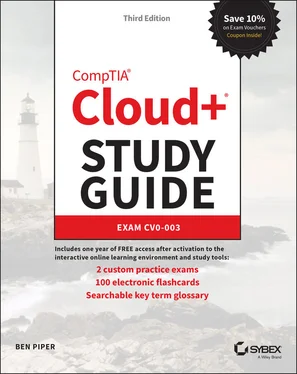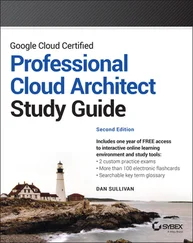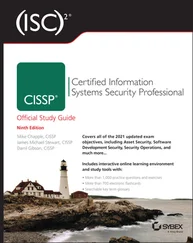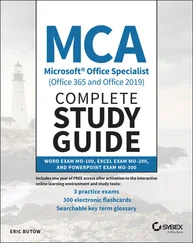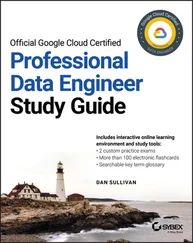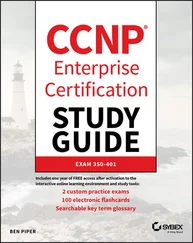Know the primary cloud delivery models. The four primary cloud delivery models are public, private, community, and hybrid clouds. Know what each one is and its function. It is critical that you understand the way cloud services are delivered in the market today and what they offer.
Be able to identify and explain cloud components. Common cloud components include applications, automation, compute, networking, security, and storage.
Know the cloud shared resource pooling model and how it is used. Resource pooling is when the cloud service provider abstracts its physical compute, storage, and networking resources into a group, or pool. The resources from these pools are dynamically allocated to customers on-demand. Resource pooling hides the underlying physical hardware from the customers in such a way that different customers share the underlying infrastructure while their cloud resources remain isolated from each other.
Understand cloud performance components. The performance you are able to achieve with your deployment is a combination of the capabilities and architecture of the cloud service provider and how you design and implement your operations. Some metrics that you'll want to consider are bandwidth usage, network latency, storage I/O operations per second (IOPS), and memory utilization.
Be able to explain how autoscaling works. The ability to automatically and dynamically add additional resources such as storage, CPUs, memory, and even servers is referred to as elasticity. Using autoscaling, this can be done “on the fly” as needed or on a scheduled basis. This allows for cloud consumers to scale up automatically as their workload increases and then have the cloud remove the services after the workload subsides. On-demand cloud services allow the cloud customer to access a self-service portal and instantly create additional servers, storage, processing power, or any other services as required. If the computing workload increases, then additional cloud resources can be created and applied as needed. On-demand allows customers to consume cloud services only as needed and scale back when they are no longer required.
Know what regions and availability zones are. Large cloud operations partition operations into geographical regions for fault tolerance and to offer localized performance advantages. A region is not a monolithic data center but rather a geographical area of presence. The actual data centers in each region are availability zones. Each region will usually have two or more availability zones for fault tolerance. The AZs are isolated locations within cloud data center regions that public cloud providers originate and operate. Each availability zone is a physically separate data center with its own redundant power and network connections.
Fill in the blanks for the questions provided in the written lab. You can find the answers to the written labs in Appendix B.
1 With the ___________________ as a Service model, the cloud provider owns and manages all levels of the computing environment.
2 With the ___________________ as a Service model, the cloud provider owns and manages the computing hardware but not the operating systems or the applications.
3 With the ___________________ as a Service model, the cloud provider owns and manages the hardware and operating system but not the application software.
4 ___________________ refers to the ability to access the cloud resources from anywhere in the network from a variety of devices such as laptops, tables, smartphones, and thin or thick clients.
5 ___________________ is the ability to take physical data center resources such as RAM, CPU, storage, and networking and create a software representation of those resources that enables large-scale cloud offerings.
6 Private, low-latency network interconnectivity between your corporate data center and your cloud operations is accomplished using ___________________.
7 ___________________ is the transfer and synchronization of data between computing or storage resources.
8 ___________________ addresses the issues found when cloud workloads and connections increase to the point where a single server can no longer handle the workload by spreading the workload across multiple cloud computing resources.
9 Common remote access protocols used to manage servers in the cloud include ___________________ and ___________________.
10 Establishing ___________________ helps you determine how to size your cloud resources.
The following questions are designed to test your understanding of this chapter's material. You can find the answers in Appendix A. For more information on how to obtain additional questions, please see this book's Introduction.
1 What cloud model gives you complete control of the operating system?IaaSPaaSSaaSCaaS
2 A cloud service provider allocates resources into a group. These resources are then dynamically allocated and reallocated as the demand requires. What is this referred to as?On-demand virtualizationDynamic scalingResource poolingElasticity
3 What are three examples of IaaS elements you can provision in the cloud? (Choose three.)CPUOS ACLsMemoryStorageScalabilitySSH
4 Which of the following is not a valid pooled resource?MemoryStorageSecurityNetworkingCPU
5 What technologies are used to enable on-demand computing? (Choose two.)Load balancingAutomationAutoscaling groupsVirtualization
6 When you migrate your operations to the cloud and you decide to match computing resources with your current requirements, what can you take advantage of to expand your compute capacity in the future? (Choose three.)ElasticityOn-demand computingAvailability zonesResiliency virtualizationPay as you growRegions
7 Your company has decided to use one cloud provider for a production application while using a different cloud provider for storing backups. What type of cloud delivery model is this?PublicHybridCommunityPrivate
8 In a traditional virtualized data center, what shared network resource do VMs on the same host use to communicate with each other?Virtual NICRegionVirtual switchLAN
9 Which cloud characteristic allows you to pay for only the services used?BurstingPay as you growChargebackAutoscaling
10 When migrating an application from the data center to the cloud, which of the following is a best practice?Deploy to a test environment to validate functionality and performance.Deploy directly to production so that end users can immediately report any problems.Clone the VM running the application and upload it to the cloud.Copy the application files to a fresh VM running in the cloud.
11 Which cloud characteristic allows you to access a self-service portal to create additional servers, storage, or other services instantly?BurstingPay as you growMultitenancyOn-demand
12 In which cloud service model does the provider handle everything up to and including the application?IaaSPaaSSaaSZaaS
13 Which of the following metrics can you typically monitor in the cloud? (Choose two.)Network latencyPhysical CPU host utilizationThe number of available physical virtualization hostsInter-availability zone latencyStorage I/O operations per second
14 Cloud service providers will often segment their operations to allow for resiliency, geographic proximity, and data protection regulations. What are these geographical segmentations referred to as?RegionsAutoscaling groupsAvailability zonesGlobal DNS affinity
15 What are critical steps to take prior to performing a migration to the cloud? (Choose three.)BaselinesCapacity requirementsVariance measurementsDocumentationAutomation rollout
16 Cloud operations are the responsibility of both your organization and the cloud service provider. What is this model called?Availability zone modelCommunity modelShared responsibility modelShared regional model
Читать дальше
